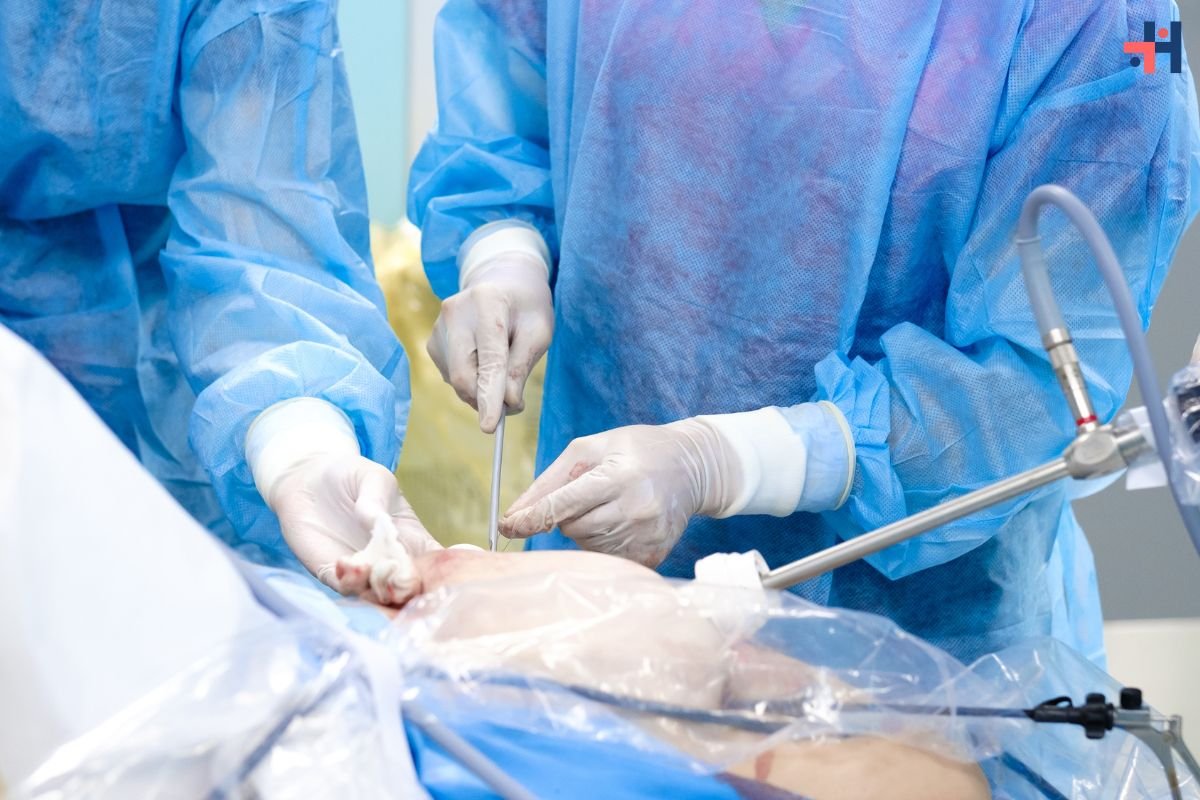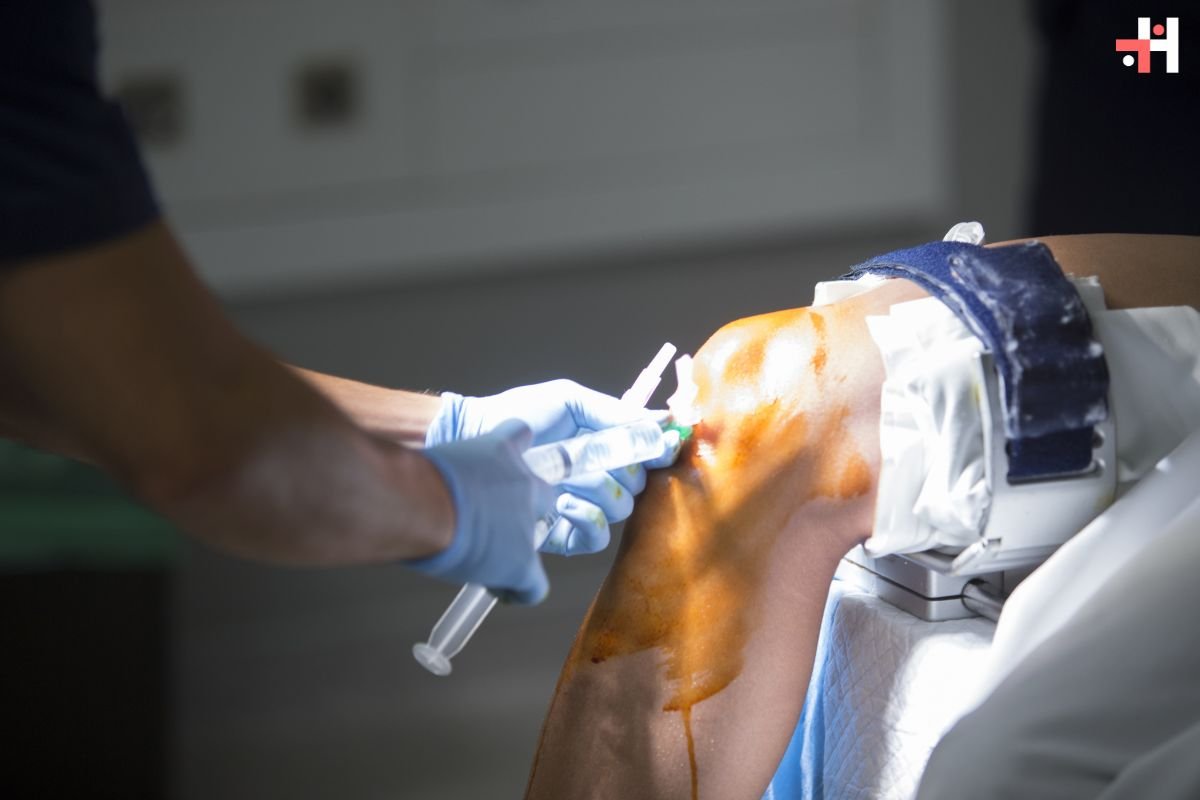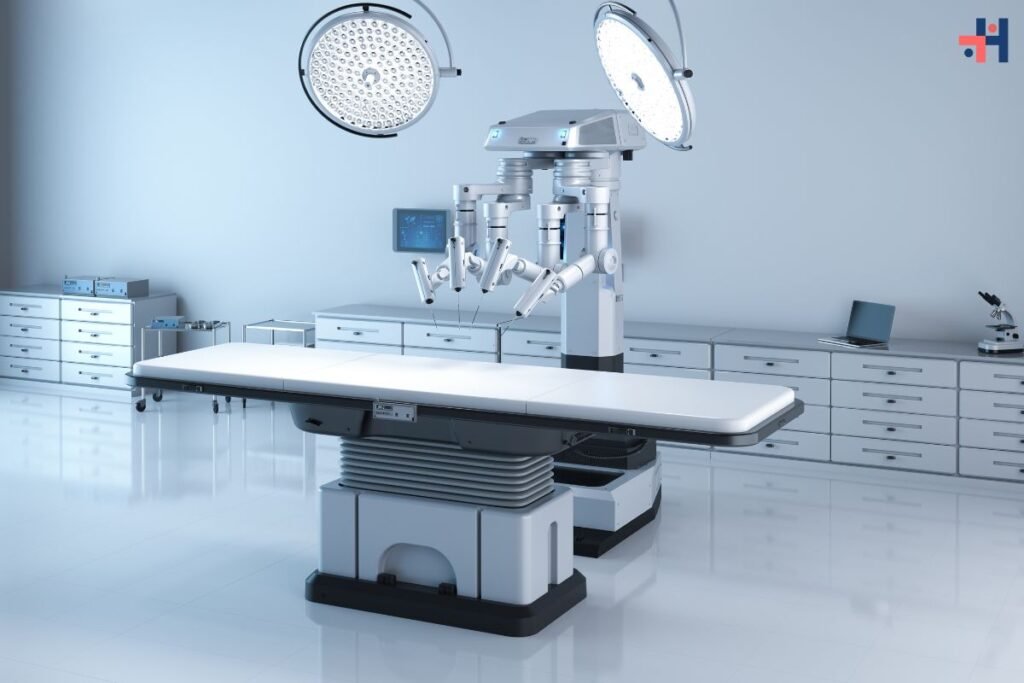Robotic surgery has become a groundbreaking advancement in the medical field, offering unprecedented precision, minimally invasive techniques, and faster recovery times. This blog delves into the world of robotic surgery, exploring its benefits, applications, and the future of this revolutionary technology.
What is Robotic Surgery?
Also known as robot-assisted surgery, it utilizes advanced robotic systems to aid surgeons in performing complex procedures with greater accuracy and control. These systems typically consist of a console, where the surgeon sits and controls the robotic instruments, and a patient-side cart with robotic arms that perform the surgery.
How does it Work?
The Surgical Console
Surgeons operate from a console that provides a high-definition, 3D view of the surgical site. The console translates the surgeon’s hand movements into precise micro-movements of the robotic instruments.
The Robotic Arms
The patient-side cart has multiple robotic arms equipped with surgical instruments and cameras. These arms can move in ways that human hands cannot, allowing for greater dexterity and precision.
The Vision System
The vision system provides a magnified, high-definition view of the operating field. This enhanced visualization helps surgeons perform intricate procedures more effectively.
Benefits
Precision and Control
Robotic systems offer unparalleled precision and control, enabling surgeons to perform delicate and complex procedures with high accuracy. The system’s ability to filter out hand tremors further enhances surgical precision.
Minimally Invasive

Robotic surgery often involves smaller incisions compared to traditional open surgery. This minimally invasive approach reduces blood loss, pain, and scarring, leading to quicker recovery times and shorter hospital stays.
Enhanced Visualization
The high-definition, 3D visualization provided by robotic systems allows surgeons to see the surgical site with greater clarity. This improved visibility helps in identifying and preserving critical structures, reducing the risk of complications.
Reduced Risk of Infection
Smaller incisions and less tissue manipulation decrease the risk of postoperative infections and complications, making robotic surgery a safer option for many patients.
Faster Recovery
Patients who undergo robotic surgery typically experience less postoperative pain and a quicker return to normal activities compared to those who undergo traditional surgery.
Applications
It has a wide range of applications across various medical specialties. Some of the common procedures include:
Cardiothoracic Surgery
Robotic systems are used in procedures such as coronary artery bypass, mitral valve repair, and lung resection, providing precise and minimally invasive alternatives to traditional open-heart surgeries.
Urologic Surgery
Procedures such as prostatectomy, nephrectomy, and bladder surgery benefit from the precision and control offered by robotic systems, resulting in improved outcomes and reduced recovery times.
Gynecologic Surgery
It is commonly used in hysterectomies, myomectomies, and endometriosis surgeries. The minimally invasive nature of robotic procedures helps in preserving fertility and reducing postoperative complications.
General Surgery
Robotic systems assist in a variety of general surgical procedures, including hernia repair, colorectal surgery, and gallbladder removal, offering enhanced precision and quicker recovery.
Orthopedic Surgery

Robotic-assisted joint replacement surgeries, such as hip and knee replacements, benefit from the precision of robotic systems, leading to better alignment and improved functional outcomes.
Neurosurgery
Robotic systems are increasingly being used in minimally invasive neurosurgical procedures, such as tumor removal and spinal surgery, providing enhanced accuracy and reduced recovery times.
The Future Impact
Advancements in Technology
As technology continues to evolve, robotic systems are becoming more advanced, with improved imaging, greater instrument flexibility, and enhanced automation. These advancements will further expand the capabilities and applications of robotic surgery.
Integration with Artificial Intelligence
The integration of artificial intelligence (AI) with robotic systems holds great promise for the future of surgery. AI can assist in surgical planning, provide real-time guidance, and enhance decision-making, leading to improved surgical outcomes.
Increased Accessibility
As robotic systems become more cost-effective and widely available, more hospitals and surgical centers will adopt this technology. Increased accessibility will allow more patients to benefit from the advantages of such surgery.
Training and Education
The future of robotic surgery also depends on the training and education of surgeons. Medical schools and training programs are increasingly incorporating it into their curricula, ensuring that the next generation of surgeons is proficient in this advanced technology.
Challenges and Considerations
Cost

One of the primary challenges of robotic surgery is the cost. Robotic systems are expensive to purchase and maintain, which can limit their accessibility to certain hospitals and patients.
Learning Curve
It requires specialized training and a learning curve for surgeons. Ensuring that surgeons are adequately trained and proficient in using robotic systems is crucial for patient safety and surgical success.
Technical Issues
As with any technology, robotic systems are susceptible to technical issues and malfunctions. Hospitals must have protocols in place to address these issues promptly to minimize disruptions during surgery.
Conclusion
Robotic surgery represents a significant leap forward in medical technology, offering numerous benefits over traditional surgical methods. With advancements in technology, increased accessibility, and ongoing education and training, the future of robotic surgery looks promising. As this innovative field continues to evolve, it has the potential to revolutionize the way surgeries are performed, improving outcomes and enhancing the quality of life for patients around the world.









